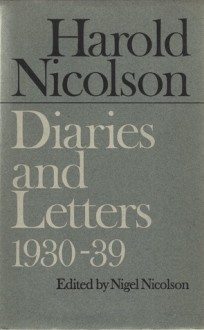To be a distinguished writer, scholar, diplomat and statesman should qualify anyone for posterity. But the Honorable Sir Harold Nicolson had two additional gifts, a striking talent for friendship on many levels and the ability to communicate with wit, urbanity, and grace. For thirty-five years he...
show more
To be a distinguished writer, scholar, diplomat and statesman should qualify anyone for posterity. But the Honorable Sir Harold Nicolson had two additional gifts, a striking talent for friendship on many levels and the ability to communicate with wit, urbanity, and grace. For thirty-five years he employed both in personal diaries of passing events, social, political, and literary.
This book, first in a three-volume series of diaries and letters, was edited by Nicolson's younger son, whose introduction is in itself a small masterpiece of perceptive candor. The diaries traverse the decade from 1930, when Sir Harold left the British Foreign Service, to the outbreak of the Second World War. Since he knew most of the key figures and was peculiarly endowed to describe and interpret whatever he heard, saw, and did, they offer a superb record of that era, with intimate glimpses of the famous or influential. Churchill, Keynes, Beaverbrook, Mosley, Virginia Woolf, E. M. Forster, W. H. Auden and countless others liven page after page. Of special interest to American readers is is close relationship with the Lindbergh-Morrow family during the stressful days of the kidnapping trial and Hauptmann's conviction.
Apart from their prime historical importance for those who would understand the atmosphere of London in those depression-prewar years, both diaries and letters offer interesting sidelights on Nicolson's own political evolution form appeaser to sturdy opponent of the Third Reich. He was for four of those years a member of Parliament.
On the personal side he illuminates a most unusual marriage. Nicolson's wife, Victoria Sackville-West, was a renowned poet, novelist and biographer. Superficially, the couple seemed oddly matched: he a social, extroverted being; she the product of mingled Spanish and English blood, described as "romantic, secret, and undomesticated." Yet each complemented the other in a stimulating fashion, so that static and dynamic qualities blended into a harmonious whole. A symbol of this deep and abiding union was their beautiful garden as Sissinghurst, Kent, a jointly designed venture.
Lively, gay, the lasting achievement of a well-decorated mind, this volume places Nicolson alongside Sir John Evelyn and Madame de Sévigné as one of the truly great observers and chroniclers of the Western world.
show less

